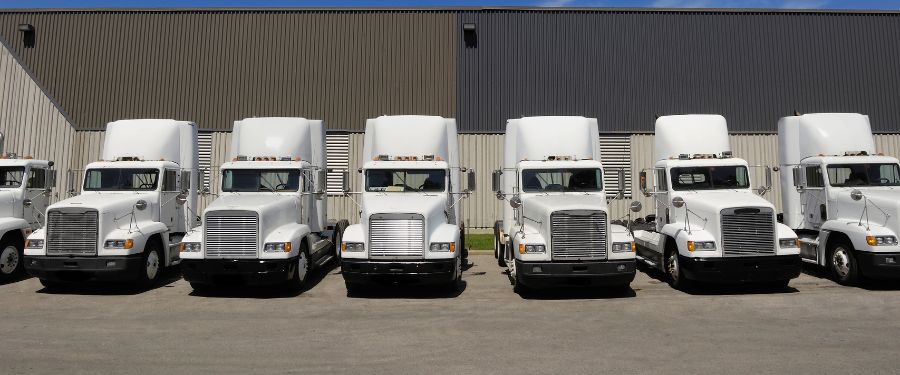Australia’s heavy vehicle sector keeps our economy moving — carrying freight, supporting logistics, and driving industry growth. With such critical responsibility on the road, even a moment of impairment can have life-changing consequences.
Alcohol and drug risks remain a focus across the transport industry, with regulators, insurers, and major customers expecting operators to demonstrate proactive safety controls. Regular testing, supported by policy, training, and reliable technology, is no longer optional — it’s an operational duty and a legal expectation.
The Legal Landscape: Safety Duties in Heavy Transport
Chain of Responsibility (CoR)
Under the Heavy Vehicle National Law, everyone in the supply chain — from employers to schedulers to consignors and receivers — has a legal obligation to ensure work is carried out safely. This duty extends to ensuring drivers are fit for duty and not impaired by alcohol or drugs.
Zero BAC Expectation
While legal alcohol limits vary by state, heavy vehicle operators face stricter rules. In Victoria, for example, a 0.00 BAC limit applies to all heavy vehicles over 4.5T GVM. Many operators adopt a zero-alcohol policy Australia-wide to remain compliant across borders and align with best practice.
Drug-Driving Laws
Drivers must not:
- Drive with any detectable presence of illicit drugs, or
- Be impaired by alcohol or drugs while working or in control of a vehicle.
Workplaces must show they took reasonably practicable steps to prevent impairment on duty.
Expectations from Regulators
Authorities such as the NHVR and Safe Work Australia expect operators to:
- Identify drug and alcohol impairment as a workplace hazard
- Implement effective control measures, including testing
- Train staff and supervisors
- Maintain records and be ready to provide evidence during audits
For heavy transport businesses, not having a robust alcohol and drug (AOD) management plan can be seen as a breach of due diligence and CoR responsibilities.
Industry Risk — and the Real-World Impact
Truck driving is high-risk work. A momentary lapse in judgment or slowed reaction time can lead to catastrophic outcomes.
With stimulant and alcohol use still prevalent in segments of the community, commercial operators must assume that risk can enter their workplace unless proactively managed.
Trucking incidents linked to impairment — including severe crashes in recent years — highlight why prevention and detection programs matter.
CASE STUDY: King’s Transport stays safe using Andatech breathalysers
How to Build a Defensible Alcohol & Drug Program
A strong AOD safety framework should include:
✅ Clear & Fair Policy
- Zero BAC during duty
- Prohibited drug use defined clearly
- Medication disclosure process
- Support pathways & disciplinary actions
✅ Structured Testing Program
Recommended testing types include:
|
Testing Type |
Purpose |
|
Establish baseline safety compliance |
|
|
Strong deterrent in high-risk roles |
|
|
Post-incident / For-Cause |
Investigate potential impairment |
|
Return-to-Work |
Verify readiness after suspension or rehab |
✅ Chain-of-Custody & Confirmations
- Use reliable screening devices
- Confirm non-negative results via accredited laboratory testing
- Document everything
- Maintain confidentiality
✅ Recordkeeping
Secure storage of:
- Test results
- Supervisor training
- Device calibration history
- Policy & procedure versions
Digital systems and cloud logging platforms like Andalink support compliance audits and multi-site operations.
FURTHER READING: National Heavy Vehicle Regulator Guidelines

Technology & System Integration Matters
Modern fleets benefit from:
- Breathalysers with advanced fuel-cell sensors
- Saliva and urine drug testing kits that meet Australian standards
- Digital test result capture for traceability
- Integration capability with HR, safety, or enterprise systems (SAP, HRIS etc.)
This reduces manual handling, speeds up reporting, and supports defensible decision-making.
Contracting & Site Entry Requirements
Major distribution hubs, ports, and industrial sites often require:
- Zero BAC compliance
- On-site testing
- Proof of testing history or policy evidence
Being test-ready helps avoid operational disruption and protects commercial relationships.
Heavy Vehicle AOD Readiness Checklist
Operators should have:
- ✅ AOD Policy & procedure
- ✅ Defined testing schedule
- ✅ Calibrated breathalysers & compliant drug test kits
- ✅ Chain-of-custody documentation
- ✅ Confirmatory testing pathway
- ✅ Supervisor competency records
- ✅ Secure electronic record system
- ✅ Contractor & sub-contractor compliance checks
Download: Transportation Alcohol & Drug Testing Checklist
FAQs on drug and alcohol use in the heavy vehicle industry
Is drug and alcohol testing mandatory in transport?
Not explicitly — but under WHS & CoR, you must control impairment risks. Testing is a recognised control.
What BAC limit should be set for heavy vehicle drivers?
0.00 is recommended — it aligns with legal requirements in several jurisdictions and avoids ambiguity.
What about prescription medications?
Policies should require disclosure and fitness-for-duty assessment in coordination with medical advice.
In a nutshell
In the heavy vehicle industry, alcohol and drug risks demand serious, structured management. Implementing a zero-impairment policy, routine testing, and digital record capture protects your people, the public, and your reputation.
A proactive AOD program is not simply compliance — it’s good business, and it keeps your people safe.
Reach out to us below for free consultation on creating or improving your existing drug and alcohol testing policies, protocols and equipment.





